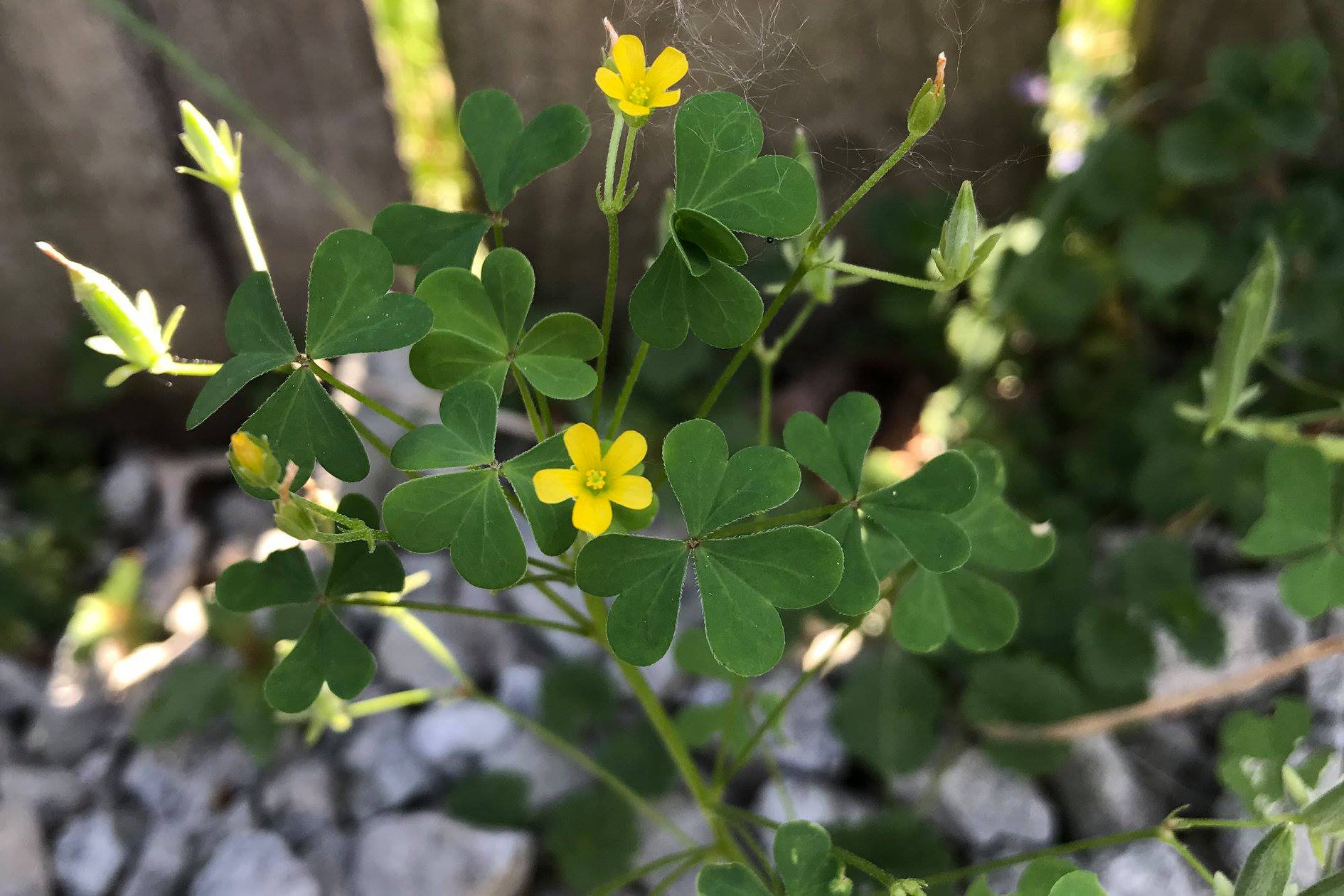Common yellow woodsorrel (Oxalis stricta) is a broadleaf perennial weed found in most of the United States. It is sometimes referred to by other names, including yellow oxalis, upright yellow sorrel, and lemon clover. Common yellow woodsorrel belongs to the Oxalis genus, which contains more than 500 species and makes up the majority of the Oxalidaceae (woodsorrel) family. It has a different classification from clover, but both plants are commonly considered “shamrocks.”
Life Cycle
Common yellow woodsorrel is generally believed to be native to North America, though there is some debate about that. It is considered a perennial but sometimes behaves as an annual in harsher climates. Common yellow woodsorrel spreads via rhizomes and seeds. It produces seeds through the summer, which then germinate at high rates the following spring. Each plant can bear as many as 5,000 seeds, and the bursting capsules can send seeds flying as far as 16 feet.
Identification
Common yellow woodsorrel grows upright from a taproot and rhizomes, which root at the node. Its leaves range from green to red, and each has three creased leaflets in the shape of a heart. These leaflets naturally fold on the crease at night and reopen in the morning. Common yellow woodsorrel produces clusters of small yellow flowers, each with five elongated round petals.
Edibility
The entire common yellow woodsorrel plant is edible in moderation. It is known for having a sour, lemony taste. The plant contains levels of oxalic acid that make it poisonous if consumed in high quantities, along with some other precautions to know before eating this plant.
Lookalikes
Several other plants resemble common yellow woodsorrel. Two of its closely related lookalikes are the slender yellow woodsorrel (Oxalis dillenii) and creeping woodsorrel (Oxalis corniculata). The upright growth of the common yellow woodsorrel helps distinguish it from others. Another common weed with a similar appearance is black medic (Medicago lupulina), which is a member of the clover genus. It has yellow flowers, but they grow in distinctly clover-like clusters.
Cultural Control
Common yellow woodsorrel can grow in a range of conditions, but it does best in moist, partly shaded environments. If you choose to hand-pull the weed, remove as much of the rhizome as possible to prevent it from growing back. Focus on growing a healthy turfstand that can outcompete common yellow woodsorrel.
Pre-Emergent Control
In addition to cultural control, herbicides are an effective solution. Active ingredients labeled for pre-emergent control of common yellow woodsorrel include dithiopyr (Dimension 2EW), izoxaben, pendimethalin, and prodiamine. The PennState Extension warns that some pre-emergent herbicides only control weeds growing from seed, not new plant growth from rhizomes.
Post-Emergent Control
For post-emergent control, we carry the following herbicides labeled for common yellow woodsorrel control:
- 4-Speed XT (2,4-D, triclopyr, dicamba, and pyraflufen-ethyl)
- Escalade 2 (2,4-D, fluroxypyr, and dicamba)
- Horsepower (MCPA, triclopyr, and dicamba)
- Confront (triclopyr and clopyralid)
- Cool Power (MCPA, triclopyr, and dicamba)
- Q4 Plus (2,4-D, quinclorac, dicamba, and sulfentrazone)
- Surge (2,4-D, MCPP, dicamba, and sulfentrazone)
Your sales rep can help you select the best solution for your situation. As always, read and follow product labels when applying any of the above herbicides. These tools and resources will help you keep common yellow woodsorrel under control in your turf!








